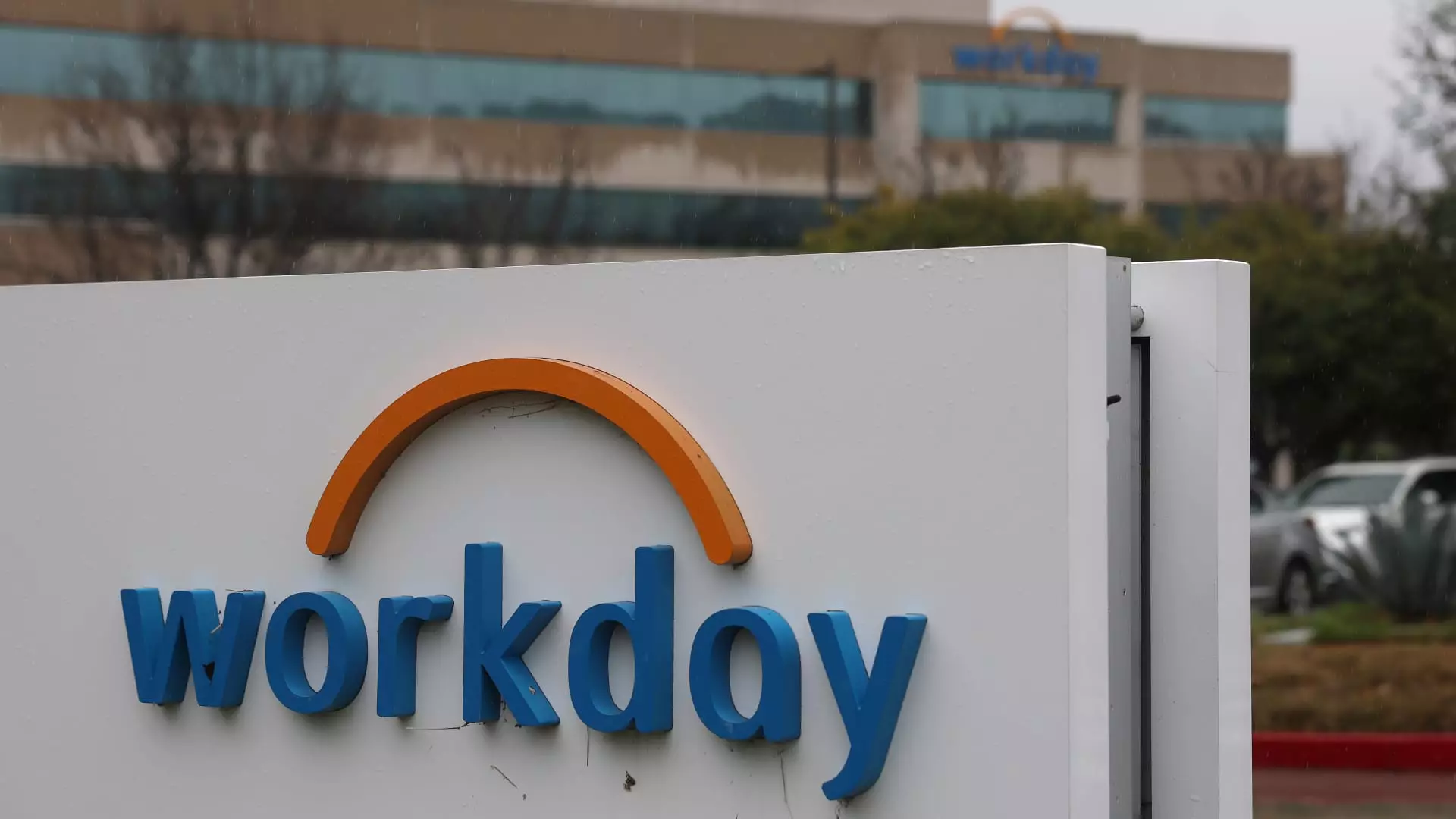Workday’s remarkable journey from a start-up to a $58 billion enterprise has been nothing short of a rollercoaster for investors. For over a decade, the company thrived on an aggressive “growth at all costs” strategy, prioritizing expanding revenues over profitability. While such a mentality propelled Workday into the ranks of industry giants—serving over 11,000 organizations, including a majority of Fortune 500 firms—it also masked underlying weaknesses. The relentless focus on top-line growth created a superficial sense of security, convincing many that scale alone would justify valuations and investor confidence.
Yet, this approach has now reached a critical pivot point. In a landscape where size and market dominance no longer guarantee prosperity, Workday’s growth has considerably slowed, and its stock underperformance—lagging peers like ServiceNow, SAP, and Salesforce—raises serious concerns. The titanic effort to maintain growth trajectories in a mature market highlights an uncomfortable truth: the law of large numbers is discouragingly unforgiving for a company that once thrived on rapid expansion. Investors are beginning to question whether revenue expansion alone will sustain their faith and whether the company’s lack of significant profits is a failing or a strategic misstep waiting to be addressed.
A Leadership Shift: From Founder Visionary to Professional Management
The appointment of Carl Eschenbach as CEO signals a perceptible shift in how Workday approaches its future. Co-founder Aneel Bhusri’s contribution cannot be overstated; he was instrumental in building the company from scratch, demonstrating vision, resilience, and a pioneering spirit. However, steering a public enterprise—especially one of this magnitude—requires a different skill set. Bhusri’s leadership has been invaluable in startup growth and innovation, but the complexities of operational efficiency, governance, and shareholder value creation demand an executive with seasoned experience managing large organizations.
Eschenbach’s ascension to full-time CEO is not just a change in personnel—it’s a strategic acknowledgment that the next phase of Workday’s evolution must prioritize sustainable profitability and shareholder returns. The shift aims to escape the trap of hypergrowth illusions and focus on disciplined execution. It reflects a broader truth: founders often excel at innovation but may struggle with the rigorous demands of mature public companies. The new leadership structure paves the way for a more objective, financially driven approach—one that underscores cost management, strategic M&A, and capital allocation.
Strategic Initiatives: From Share Buybacks to AI Synergy
Workday’s recent announcement of a multiyear plan centered around a $5 billion share repurchase program and targeted margin expansion underscores a decisive move toward value creation. The company recognizes that growth alone is insufficient; now, maximizing shareholder value through disciplined capital deployment and cost efficiency is paramount. With over $8 billion in net cash reserves, Workday possesses the firepower to buy back shares and pursue strategic acquisitions without compromising its financial stability.
Simultaneously, the company’s aggressive push into artificial intelligence promises to revolutionize its product offerings and operational capabilities. AI revenue growth of 200% year-over-year highlights the massive potential for automation of HR workflows and financial processes. This technological leap is particularly meaningful in the HR domain, where repetitive, manual tasks predominate. Workday’s recent acquisitions—Sana, Paradox, Flowise—are part of a carefully curated M&A strategy to deepen AI integration, improve efficiencies, and stay ahead of an increasingly competitive landscape.
However, simply investing in AI is insufficient if not coupled with a focus on creating genuine shareholder value. The company’s new disciplined approach to cost management and profit margins indicates an understanding that innovation must be sustainable. The challenge remains in balancing growth investments with prudent financial strategies to avoid overextension, especially given the company’s founder-controlled voting structure, which has historically led to concerns over governance and alignment with broader investor interests.
The Power of Activism and Market Sentiment
The involvement of Elliott Management, a highly active activist investor managing over $76 billion, complicates the narrative. Their recent $2 billion stake signals a bold confidence in Workday’s new strategic direction, but it also introduces a layer of scrutiny. Elliott’s reputation for intervening to steer companies towards increased profitability and shareholder returns is well-earned and controversial. Many market participants interpret their support as a wake-up call—a push for more disciplined, shareholder-aligned corporate governance.
Elliott’s influence lends legitimacy to the new management’s efforts and the strategic roadmap unveiled. It communicates to the market that significant institutional backing, especially from a firm known for detailed due diligence, can accelerate a turnaround. However, it also places pressure on Workday’s leadership to deliver tangible results swiftly. The presence of an extrinsic advocate like Elliott may help mitigate concerns about governance and alignment, especially given the company’s controlling founder, Bhusri, still holds a majority of voting power.
In essence, Workday sits at a crossroads where its history of hypergrowth must evolve into a more mature, shareholder-centric model. The new CEO’s strategic initiatives, combined with activist backing, could finally shift the narrative from one of speculative growth to sustainable value creation—if executed with discipline and focus. Whether Workday’s leadership will be able to capitalize on this rare moment of introspection and operational discipline remains uncertain. What’s clear is that the stakes have never been higher; this is a pivotal chapter that could determine whether Workday remains a dominant force or becomes just another cautionary tale in the annals of tech industry complacency.

